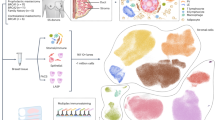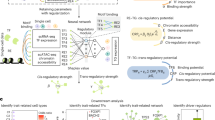Abstract
To identify new risk variants for cutaneous basal cell carcinoma, we performed a genome-wide association study of 16 million SNPs identified through whole-genome sequencing of 457 Icelanders. We imputed genotypes for 41,675 Illumina SNP chip-typed Icelanders and their relatives. In the discovery phase, the strongest signal came from rs78378222[C] (odds ratio (OR) = 2.36, P = 5.2 × 10−17), which has a frequency of 0.0192 in the Icelandic population. We then confirmed this association in non-Icelandic samples (OR = 1.75, P = 0.0060; overall OR = 2.16, P = 2.2 × 10−20). rs78378222 is in the 3′ untranslated region of TP53 and changes the AATAAA polyadenylation signal to AATACA, resulting in impaired 3′-end processing of TP53 mRNA. Investigation of other tumor types identified associations of this SNP with prostate cancer (OR = 1.44, P = 2.4 × 10−6), glioma (OR = 2.35, P = 1.0 × 10−5) and colorectal adenoma (OR = 1.39, P = 1.6 × 10−4). However, we observed no effect for breast cancer, a common Li-Fraumeni syndrome tumor (OR = 1.06, P = 0.57, 95% confidence interval 0.88–1.27).
This is a preview of subscription content, access via your institution
Access options
Subscribe to this journal
Receive 12 print issues and online access
$209.00 per year
only $17.42 per issue
Buy this article
- Purchase on Springer Link
- Instant access to full article PDF
Prices may be subject to local taxes which are calculated during checkout

Similar content being viewed by others
References
de Zwaan, S.E. & Haass, N.K. Genetics of basal cell carcinoma. Australas. J. Dermatol. 51, 81–92 (2010).
Epstein, E.H. Basal cell carcinomas: attack of the hedgehog. Nat. Rev. Cancer 8, 743–754 (2008).
Box, N.F. et al. Melanocortin-1 receptor genotype is a risk factor for basal and squamous cell carcinoma. J. Invest. Dermatol. 116, 224–229 (2001).
Gudbjartsson, D.F. et al. ASIP and TYR pigmentation variants associate with cutaneous melanoma and basal cell carcinoma. Nat. Genet. 40, 886–891 (2008).
Rafnar, T. et al. Sequence variants at the TERT-CLPTM1L locus associate with many cancer types. Nat. Genet. 41, 221–227 (2009).
Stacey, S.N. et al. Common variants on 1p36 and 1q42 are associated with cutaneous basal cell carcinoma but not with melanoma or pigmentation traits. Nat. Genet. 40, 1313–1318 (2008).
Stacey, S.N. et al. New common variants affecting susceptibility to basal cell carcinoma. Nat. Genet. 41, 909–914 (2009).
Kong, A. et al. Detection of sharing by descent, long-range phasing and haplotype imputation. Nat. Genet. 40, 1068–1075 (2008).
Kong, A. et al. Parental origin of sequence variants associated with complex diseases. Nature 462, 868–874 (2009).
Kutyavin, I.V. et al. A novel endonuclease IV post-PCR genotyping system. Nucleic Acids Res. 34, e128 (2006).
Whibley, C., Pharoah, P.D. & Hollstein, M. p53 polymorphisms: cancer implications. Nat. Rev. Cancer 9, 95–107 (2009).
Cui, R. et al. Central role of p53 in the suntan response and pathologic hyperpigmentation. Cell 128, 853–864 (2007).
Miller, A.J. & Tsao, H. New insights into pigmentary pathways and skin cancer. Br. J. Dermatol. 162, 22–28 (2010).
Sulem, P. et al. Two newly identified genetic determinants of pigmentation in Europeans. Nat. Genet. 40, 835–837 (2008).
Sulem, P. et al. Genetic determinants of hair, eye and skin pigmentation in Europeans. Nat. Genet. 39, 1443–1452 (2007).
Higgs, D.R. et al. Alpha-thalassaemia caused by a polyadenylation signal mutation. Nature 306, 398–400 (1983).
Junttila, M.R. & Evan, G.I. p53—a Jack of all trades but master of none. Nat. Rev. Cancer 9, 821–829 (2009).
Palmero, E.I., Achatz, M.I., Ashton-Prolla, P., Olivier, M. & Hainaut, P. Tumor protein 53 mutations and inherited cancer: beyond Li-Fraumeni syndrome. Curr. Opin. Oncol. 22, 64–69 (2010).
Li, F.P. et al. A cancer family syndrome in twenty-four kindreds. Cancer Res. 48, 5358–5362 (1988).
Birch, J.M. et al. Prevalence and diversity of constitutional mutations in the p53 gene among 21 Li-Fraumeni families. Cancer Res. 54, 1298–1304 (1994).
Gonzalez, K.D. et al. Beyond Li Fraumeni syndrome: clinical characteristics of families with p53 germline mutations. J. Clin. Oncol. 27, 1250–1256 (2009).
Lalloo, F. et al. Prediction of pathogenic mutations in patients with early-onset breast cancer by family history. Lancet 361, 1101–1102 (2003).
McVean, G.A. et al. The fine-scale structure of recombination rate variation in the human genome. Science 304, 581–584 (2004).
Li, H. & Durbin, R. Fast and accurate short read alignment with Burrows-Wheeler transform. Bioinformatics 25, 1754–1760 (2009).
Li, H. et al. The Sequence Alignment/Map format and SAMtools. Bioinformatics 25, 2078–2079 (2009).
Fitzpatrick, T.B. The validity and practicality of sun-reactive skin types I through VI. Arch. Dermatol. 124, 869–871 (1988).
Acknowledgements
The work at deCODE genetics was funded in part by contract number 202059 (PROMARK) from the 7th Framework Program of the European Union. The Danish study 'Diet, Cancer and Health' was supported by grants from the Danish Cancer Society and 'Europe against cancer': European Prospective Investigation into Cancer and Nutrition (EPIC). The Inter99 study 'A population-based primary prevention study on cardiovascular disease and type 2 diabetes' was initiated by T. Jørgensen (principal investigator), K. Borch-Johnsen (co-principal investigator), H. Ibsen and T.F. Thomsen. The steering committee comprises the former two individuals and C. Pisinger. The establishment of the cohort was financially supported by research grants from the Danish Research Council, The Danish Centre for Health Technology Assessment, Novo Nordisk Inc., Research Foundation of Copenhagen County, the Ministry of Internal Affairs and Health, The Danish Heart Foundation, The Danish Pharmaceutical Association, The Augustinus Foundation, The Ib Henriksen Foundation and the Becket Foundation. The University of California, San Francisco (UCSF) Adult Glioma Study also acknowledges the people who have made substantial contributions to subject recruitment, specimen processing, pathology review and data analysis, including L.S. McCoy, I. Smirnov, J.S. Patoka, M.D. Prados, S.M. Chang and M.S. Berger (Department of Neurological Surgery, UCSF), J.L. Wiemels (Department of Epidemiology and Biostatistics, UCSF) and T. Tihan (Department of Pathology, UCSF). Work at the University of California, San Francisco has been supported by US National Institutes of Health (NIH) grants R01CA52689 and UCSF Brain Tumor SPORE, P50CA097257, as well as by grants from the National Brain Tumor Foundation, the UCSF Lewis Chair in Brain Tumor Research and by donations from families and friends of J. Berardi, H. Glaser, E. Olsen, R.E. Cooper and W. Martinusen. Work at the Mayo Clinic has been supported by the Mayo Clinic Brain Tumor SPORE (NIH P50 CA108961), the Mayo Clinic Comprehensive Cancer Center (NIH P30 CA15083) and an American Recovery and Reinvestment Act (ARRA) Recovery grant (NIH NS068222). Members of the Swedish Low-risk Colorectal Cancer Study Group are: D. Edler, Karolinska Universitetssjukhuset, Solna, Stockholm, Sweden; C. Lenander, Mag-tarm-centrum, Ersta sjukhus, Stockholm, Sweden; J. Dalén, St Görans sjukhus, Stockholm, Sweden; F. Hjern, Danderyds sjukhus, Danderyd, Sweden; N. Lundqvist, Norrtälje sjukhus, Norrtälje, Sweden; U. Lindforss, Södertälje sjukhus, Södertälje, Sweden; L. Påhlman, Akademiska sjukhuset, Uppsala, Sweden; K. Smedh, Centrallasarettet, Västerås, Sweden; A. Törnqvist, Centralsjukhuset, Karlstad, Sweden; J. Holm, Länssjukhuset Gävle-Sandviken, Gävle. Sweden; M. Janson, Karolinska Universitetssjukhuset, Huddinge, Huddinge, Sweden; M. Andersson, Universitetssjukhuset, Örebro, Sweden; S. Ekelund, Södersjukhuset, Stockholm, Sweden; and E. Olsson, Mälarsjukhuset, Eskilstuna, Sweden. Work on the US Prostate Cancer sample set was supported in part by the Urological Research Foundation, Prostate SPORE grant (P50 CA90386-05S2) and the Robert H. Lurie Comprehensive Cancer Center grant (P30 CA60553). For the UK Prostate Cancer sample set, the UK Department of Health funded the ProtecT study through the National Institute for Health Research (NIHR) Health Technology Assessment programme (projects 96/20/06, 96/20/99). We acknowledge the contribution of all members of the ProtecT study research group. We acknowledge the support of the NIHR Cambridge Biomedical Research Centre and the National Cancer Research Institute (ProMPT) Prostate Cancer Collaborative. The views and opinions expressed herein are those of the authors and do not necessarily reflect those of the UK Department of Health. Sample collection in Romania was supported in part by the Romanian National Council For Scientific Research (CNCSIS-UEFISCSU), grant PNII-IDEI 1184/2008. In Spain, J.I.M. is funded by Red Tematica de Investigacion Cooperative en Cancer RD06/0020/1054.
Author information
Authors and Affiliations
Consortia
Contributions
The study was designed and the results were interpreted by S.N.S., P.S., G.M., D.F.G., O.T.M., J.H.O., A.K., U.T., T. Rafnar and K.S. Subject ascertainment and recruitment was carried out by S.N.S., J.G., B.S., K.T., R.R., K.R.B., B.A.N., A.T., K.O., P.R., E.G., K.K., K.H., C.C., V.F., P.G., S.N., F.F., M.D.G.-P., E.S., A.P., A.D.J., A.G., F.R., D.P., V. Soriano, C.R., K.K.A., M.M.v.R., R.G.H.M.C., I.M.v.O., D.-J.v.S., J.A.S., W.H.M.P., B.T.H., J.L.D., F.C.H., D.B., O.C., M.J., I.E.C., V.C., P.B., I.N.M., D.E.D., A.C., D.M., S.K., B.A.A., E.J., R.B.B., G.V.E., F.S., P.H.M., T.S., T.V., O.T.J., H.S., T. Jonsson, J.G.J., L.T., T. Rice, H.M.H., Y.X., D.H.L., B.P.O., M.L.K., P.A.D., V. Steinthorsdottir, A.L., R.S.S., T.O.K., K.B., T. Jørgensen, D.R.W., T.H., O.P., V.J., D.E.N., W.J.C., M.W., J.W., R.B.J., E.N., U.V., L.A.K., R.K., J.I.M., J.H.O., U.T. and T. Rafnar. The sequencing, genotyping and expression analysis was carried out by S.N.S., A.J., J.G., O.T.M., H.J., H.T.H., A.S. and U.T. The statistical and bioinformatics analysis was carried out by S.N.S., P.S., G.M., D.F.G., S.A.G., G.T. and A.K. S.N.S., P.S., D.F.G., T. Rafnar and K.S. drafted the manuscript. All authors contributed to the final version of the paper. Principal collaborators for the case-control population samples were: S.K. (Colorectal Adenoma), G.V.E. (Iceland Prostate), V.J. (Romania Prostate), D.E.N. (UK Prostate), W.J.C. (US Prostate), M.W. (US UCSF Glioma), R.B.J. (US Mayo Clinic Glioma), E.J. and J.I.M. (Spain BCC and Prostate), U.V. and O.P. (Denmark BCC), L.A.K. (Netherlands Prostate), R.K. (Eastern Europe BCC) and J.H.O. (Iceland BCC).
Corresponding authors
Ethics declarations
Competing interests
deCODE Genetics is a private biotechnology company that markets genetic tests.
Additional information
A full list of members is provided in the Acknowledgements Section.
Supplementary information
Supplementary Text and Figures
Supplementary Figures 1–3, Supplementary Tables 1–6 and Supplementary Note. (PDF 2304 kb)
Rights and permissions
About this article
Cite this article
Stacey, S., Sulem, P., Jonasdottir, A. et al. A germline variant in the TP53 polyadenylation signal confers cancer susceptibility. Nat Genet 43, 1098–1103 (2011). https://doi.org/10.1038/ng.926
Received:
Accepted:
Published:
Issue Date:
DOI: https://doi.org/10.1038/ng.926
This article is cited by
-
Deep learning of human polyadenylation sites at nucleotide resolution reveals molecular determinants of site usage and relevance in disease
Nature Communications (2023)
-
Context-specific regulation and function of mRNA alternative polyadenylation
Nature Reviews Molecular Cell Biology (2022)
-
Germline-somatic JAK2 interactions are associated with clonal expansion in myelofibrosis
Nature Communications (2022)
-
Spontaneous and inherited TP53 genetic alterations
Oncogene (2021)
-
An atlas of alternative polyadenylation quantitative trait loci contributing to complex trait and disease heritability
Nature Genetics (2021)



